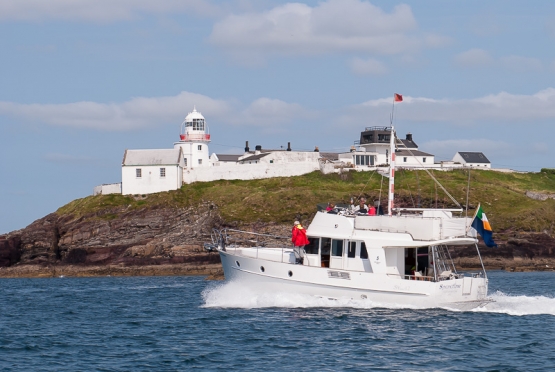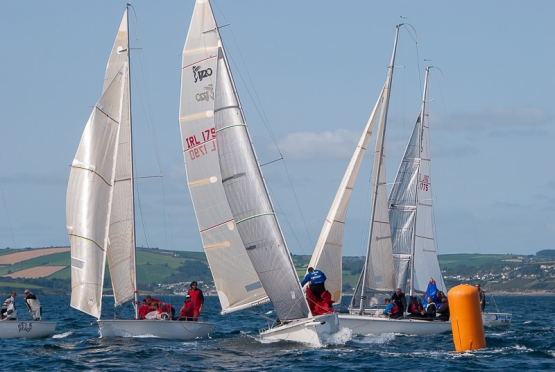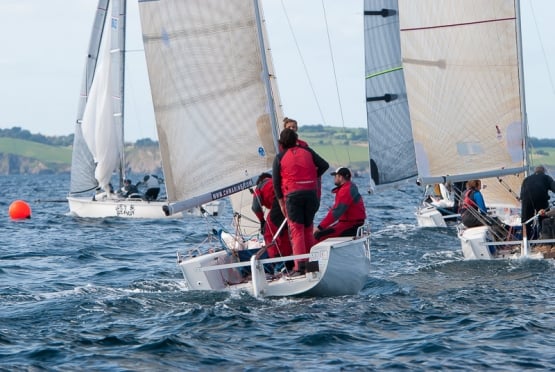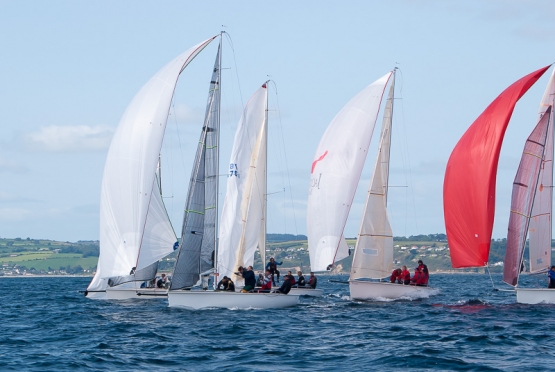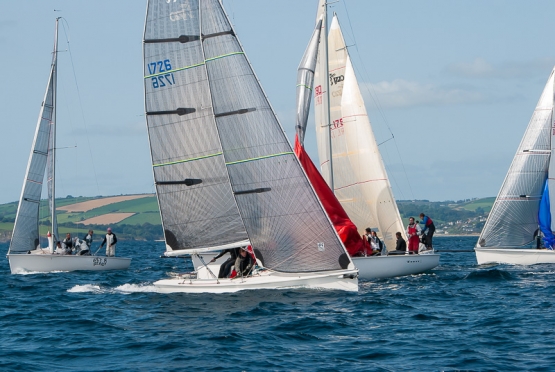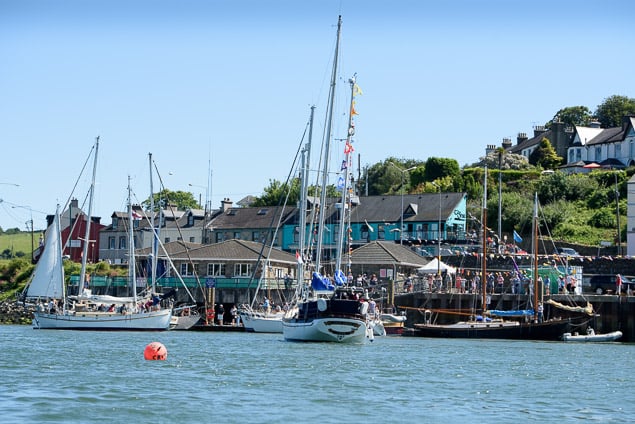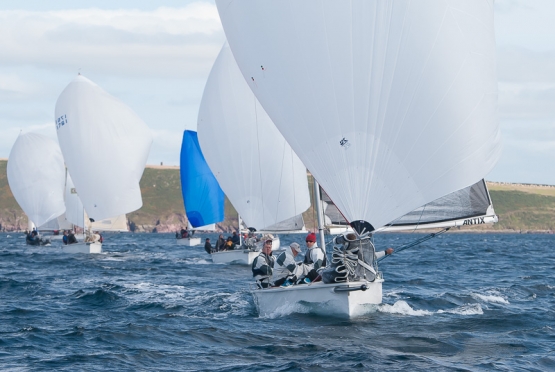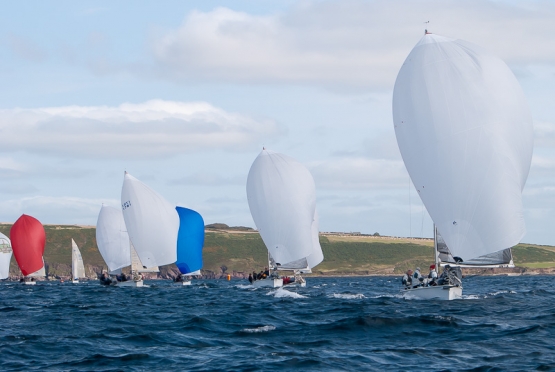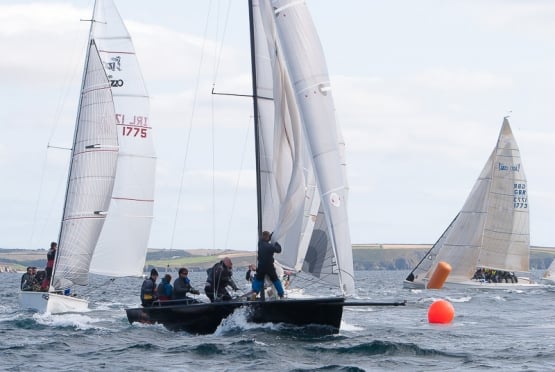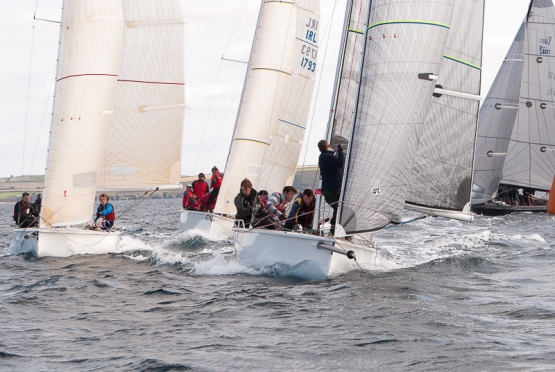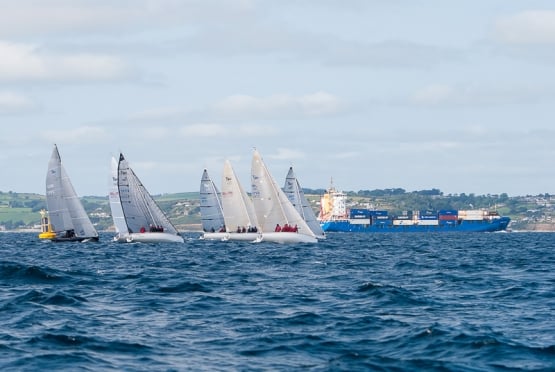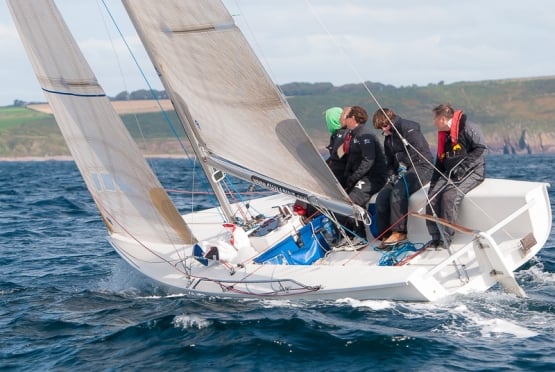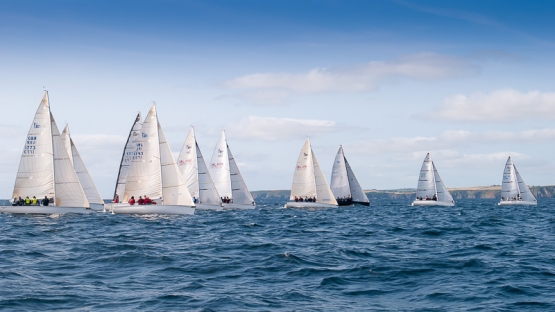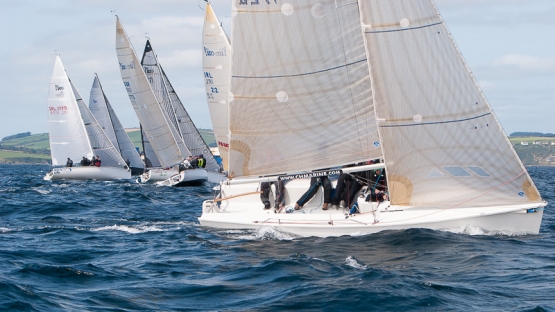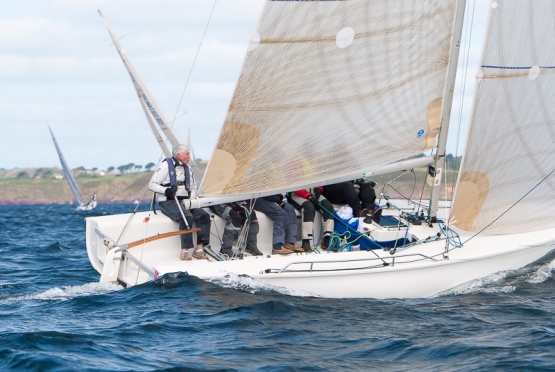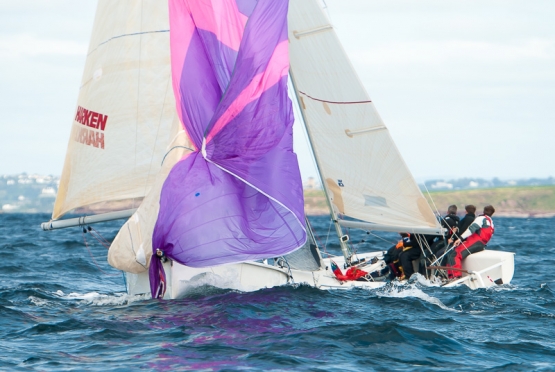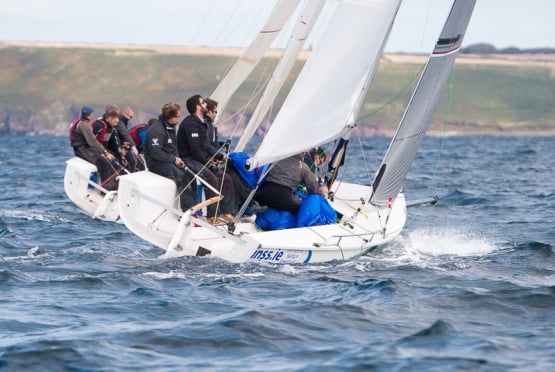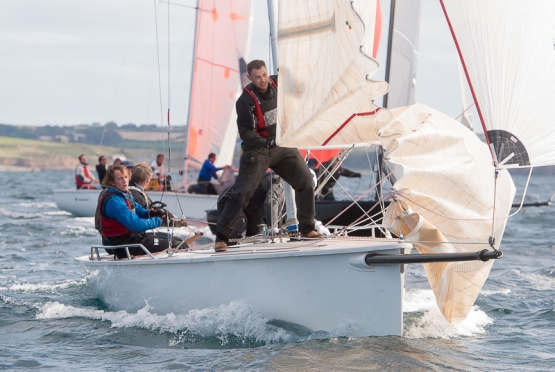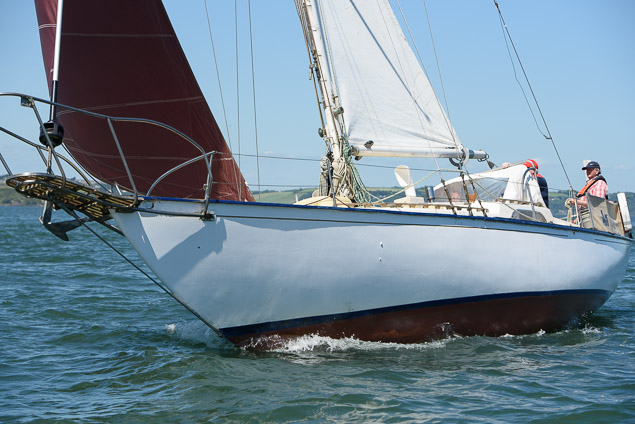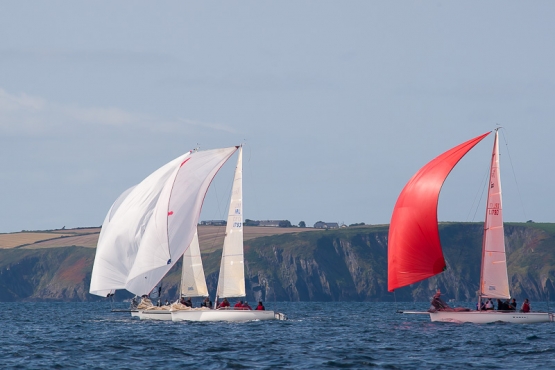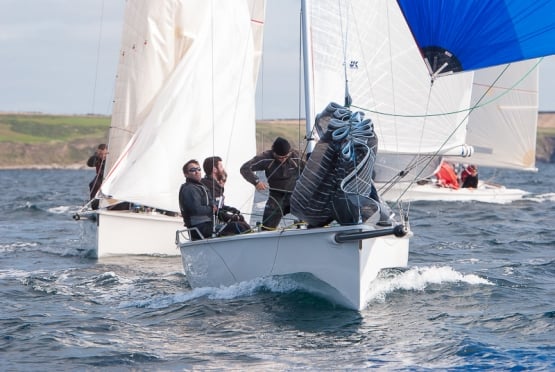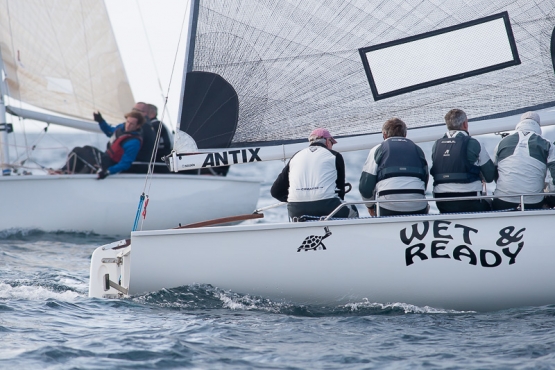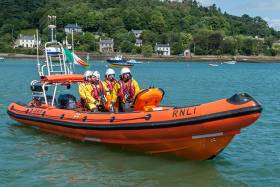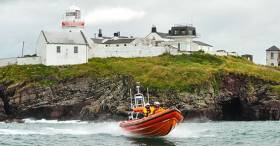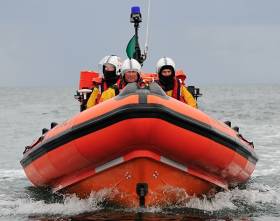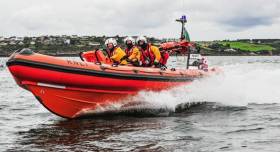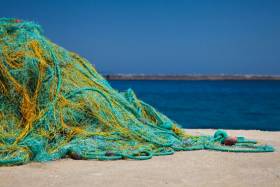Displaying items by tag: Crosshaven
Crosshaven RNLI New Inshore Lifeboat To Be Named 'John and Janet'
A new Atlantic 85 lifeboat for Crosshaven RNLI is to be officially named John and Janet during a ceremony at the Cork lifeboat station at 2pm on Sunday 11 September.
The lifeboat which went on service in June this year was funded by an anonymous donor. Afloat.ie's Tom MacSweeney will represent the donor at the naming ceremony and service of dedication and will officially hand the lifeboat into the care of the RNLI.
The lifeboat will be named by Paddy Crowley, son of the late Con, a long serving and much loved helm at Crosshaven RNLI who died suddenly last year.
Last year, Crosshaven RNLI launched 42 times and rescued 50 people. The new lifeboat replaces Miss Betty, the station’s first permanent lifeboat, which was on service in Crosshaven since the station was formally established 14 years ago.
Speaking ahead of next week’s event, Patsy Fegan, Crosshaven RNLI Lifeboat Operations Manager said: ‘The naming ceremony and service of dedication is a very special occasion for our lifeboat station and we are grateful to the anonymous donor who funded our new lifeboat. Since the lifeboat went on service in June, it has launched 17 times and rescued 34 people.’
Fast, manoeuvrable and reliable, the B class operates in rough weather conditions, capable in daylight up to force seven and at night, to force six winds.
The new lifeboat, an Atlantic 85 is the latest version of the B class, introduced into the fleet in 2005. She is powered by two 115horsepower engines and has a stronger hull and greater top speed than her predecessor. The added radar allows the crew to operate more effectively in poor visibility and she also has VHF direction-finding equipment.
The vessel also has a manually operated self-righting mechanism which combined with inversion-proofed engines keep the lifeboat operational even after capsize. The lifeboat can also be beached in an emergency without causing damage to its engines or steering gear.
The Atlantic 85 carries a full suite of communication and electronic navigation aids, as well as a searchlight, night-vision equipment and flares for night-time operations.
The RNLI first established Queenstown Lifeboat Station in 1866, following several wrecks with loss of life off Cork Harbour. However, the first record of a lifeboat in Cork Harbour was as far back as 1825, one year after the founding of the Institution.
Since the closure of Queenstown in 1920, many attempts were made to site a lifeboat in the harbour.
Based on the level of activity in the area, the availability of crew and temporary facilities, a decision was taken to place an Atlantic 21 on evaluation for 12 months in 2000 before the RNLI declared the station a permanent facility in 2001.
Miss Betty, the station’s first permanent lifeboat arrived in 2002 where she remained on service until June this year.
The RNLI is a charity which relies on voluntary contributions and legacies.
Crosshaven RNLI Lifeboat crew responded to a request from Valentia Coast Guard this evening to a person seen being held onto the side of a moored boat in the Channel at East Ferry.
The Crosshaven volunteer crew happened to be near Roches Point on exercise when the emergency call came through and immediately made best speed to the area arriving some 15 minutes later at 20.45. The crew located the casualty and recovered him to the lifeboat.
It appears the sailor had the mishap while transferring to a punt. The other person required no assistance.
With obvious signs of hypothermia and limb injuries after spending 20/25 minutes in the water, the lifeboat crew administered First Aid and headed for Cobh and a rendevous with the Emergency Ambulance. The casualty was handed into the care of the paramedics before returning to station at 21.50.
Crosshaven RNLI Launch to Supermarket Dinghy Blown Out to Sea
Crosshaven lifeboat was launched this afternoon after a member of the public alerted the Coast Guard to an inflatable Dinghy with thre persons on board being blown out to sea.
The lifeboat launched at 14.52 and made their way to Ringabella Bay arriving on scene at 3.10pm. No sighting of the dinghy initially was made, but the crew noticed a Supermarket type inflatable dinghy on the shore at Ringabella beach. A crew member swam ashore and talked to the owners who confirmed they were the 3 people that had left Fountainstown. As they were now ashore and safe all units were stood down.
The occupants were wearing swim gear apart from one who had a wetsuit and a bouyancy aid. The wind offshore was blowing force 5 to 6 although calmer within the bay. Crosshaven Coast Guard imparted safety information to the people involved.
Commenting on the service call, Patsy Fegan, Lifeboat Operations manager said "The use of inflatables and lilo's should only be used in the confines of a swimming pool. Luckily these people came to no harm, but with a force 5 wind they could have drifted well offshore”
As well as Crosshaven Lifeboat, other agencies involved were Rescue 117 helicopter from Waterford, The Naval vessel, LE Niamh which acted as a Radio Relay to the Coast Guard and the Crosshaven Coast Guard boat.
#RNLI - A major search was mounted on the south coast between Crosshaven and Kinsale on Friday (15 July) after a lone yachtsman broadcast a Mayday call that he was on the rocks at the Little Sovereign Rock.
Lifeboat pagers were activated at 12.07pm and both Crosshaven and Kinsale RNLI headed to the location, joined by Crosshaven Coast Guard and the Waterford-based Irish Coast Guard helicopter Rescue 117.
Conditions were poor on scene, with a fog reducing visibility to just 200m. Kinsale RNLI found no trace of the yacht at the Sovereigns, while Crosshaven RNLI searched the shore from Roberts Head west. Crosshaven Coast Guard stood offshore as a radio relay to Valentia Coast Guard.
The Crosshaven lifeboat crew eventually located the vessel aground in Rocky Bay. One crewmember swam to the yacht with a towline and retrieved the its anchor and line. The yacht was then refloated and towed into deeper water.
After handing off the tow to Kinsale RNLI, the vessel and its yachtsman were returned to Oysterhaven none the worse for wear.
Crosshaven Lifeboat Helm Appointed To RNLI Council
#RNLI - Crosshaven RNLI has announced that Ian Venner, a helm with the crew, has been appointed to the RNLI Council for Ireland as one of its 15 members.
Venner has been a member of the lifeboat crew and a helm since the station was re-established in 2000.
An accountant by profession and a keen powerboater, Venner replaces on the council well-known Cork businessman and sailor Peter Crowley, who after 10 years on the council becomes an RNLI vice president.
The RNLI Council acts in the interest of the RNLI in the Republic and Northern Ireland and makes recommendations and gives advice to the RNLI Board, the Council and the Executive Team concerning lifeboat matters.
RNLI Crosshaven Take Yacht off Beach in Cork Harbour
Crosshaven RNLI lifeboat launched at 10.53pm last night to a small yacht aground at White Bay on the East side of Cork Harbour.
At the scene, the crew found one person in the water attempting to hold the yacht off the beach in the swell and another person on the beach.
One RNLI crewman swam ashore to assess the situation and attach a towline to the yacht. As the casualties were cold and wet, they were handed into the care of Guileen Coast Guard unit for transportation, while the lifeboat brought the vessel to Crosshaven.
#RNLI - Crosshaven RNLI launched to reports of a man overboard from a visiting US Coast Guard cutter off Cork Harbour yesterday morning (Tuesday 24 May).
According to the station's Facebook page, the Crosshaven lifeboat was tasked alongside the local Irish Coast Guard unit and the Waterford-based coastguard helicopter Rescue 117 after the crewman fell overboard from the vessel conformed by gCaptain as the sail training barque Eagle.
However the operation was stood down shortly after launch as the tall ship mounted its own successful rescue of the casualty.
Eagle, which previously visited Irish waters in 2011, is expected in Dublin later this week before sailing to Britain and Portugal next month.
Cork Trawler Owner & Skipper Fined Over Safety Breaches
#Fishing - Out-of-date safety equipment has seen a Cork trawler skipper and owner landed with €4,000 in fines, as RTÉ News reports.
Pat O'Mahony of Kinsale and the Crosshaven-based Labardie Fisher Ltd pled guilty at district court in a case taken on behalf of the Minister for Transport, Tourism and Sport.
The former was convicted of having expired distress signals and hydrostatic life raft releases on his fishing trawler on 5 October last year.
Meanwhile, the trawler owner was fined on a charge of arriving in port with expired distress signals, and for failing to send the port superintendent a signed crew manifest as of 28 May last year.
The court heard that both skipper and owner, who lost 12 days of fishing during the investigation, co-operated fully during the process.
RTÉ News has more on the story HERE.
New RNLI Lifeboat for Crosshaven In Cork Harbour
The RNLI have announced the replacement of the Crosshaven Atlantic 75 class lifeboat “Miss Betty” with the newer and improved Atlantic 85 Class of lifeboat.
The new lifeboat is 8.5 metres long with extra load carrying space for stretchers and the ability to take an extra fourth crewman. The new boat will also carry RADAR, direction finding equipment , a full crew communication system and uprated Navigation equipment.
The new lifeboat will be named ”JOHN AND JANET “ and will carry the service number B892. The lifeboat is expected to arrive in May and the crew will go into extensive training to familiarise themselves with the new boat.
The funding of the JOHN AND JANET came from an anonymous legacy which stipulated that the funds were to be used
for a lifeboat and that it be named JOHN AND JANET.
Commenting on the new arrival, Patsy Fegan, Lifeboat Operations Manager said, “ Miss Betty has given Crosshaven and the harbour area 14 years of sterling service and not once has she let us down. Miss Betty will retire into the relief fleet and continue to save lives around the coast of Ireland and the UK. We would like to thank the Clayton Love family once again for funding Crosshaven’s first lifeboat in 2002. Whilst we will miss “Miss Betty”, we also look forward to the increased capabilities that the Atlantic 85 will give us in the saving of lives at sea”.
A naming and dedication service for the “JANET AND JOHN “will take place at the lifeboat station on Sunday September 11th next.
1720 Sportsboat Europeans Photos From Royal Cork (Day Three)

